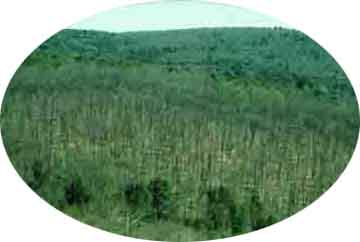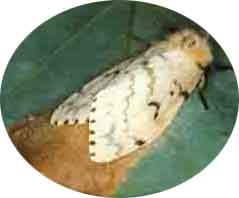
The gypsy moth is a major defoliator of trees over an increasing area in the eastern United States. Severe gypsy moth outbreaks can defoliate large areas. Defoliation is the loss of some or all leaves due to insects or disease.

FORSite>Contents>The Forest Community (2 of 6)>More on Gypsy Moths (1 of 4)
Gypsy Moths

| The gypsy moth is a major defoliator of trees over an increasing area in the eastern United States. Severe gypsy moth outbreaks can defoliate large areas. Defoliation is the loss of some or all leaves due to insects or disease.
|
 | Gypsy moths are not native to the United States. They are native to Europe and were introduced in the 1860's by a scientist named Etienne Leopold Trouvelot. Silk producing moths in the US were dying from different diseases, so Trouvelot had an idea to breed the disease resistant gypsy moth with silk producing moths. He brought some to his home in Massachusetts to begin. When he was experimenting, some of the gypsy moths escaped! Within ten years he started noticing defoliation around his neighborhood. Gypsy moths feed on the leaves during the larvae stage. The tree grows weak and, after a couple years of defoliation, dies. He did not realize the huge effect these insects would have on our forests. However, there are many ways we can control the gypsy moth at different stages of its life cycle. |